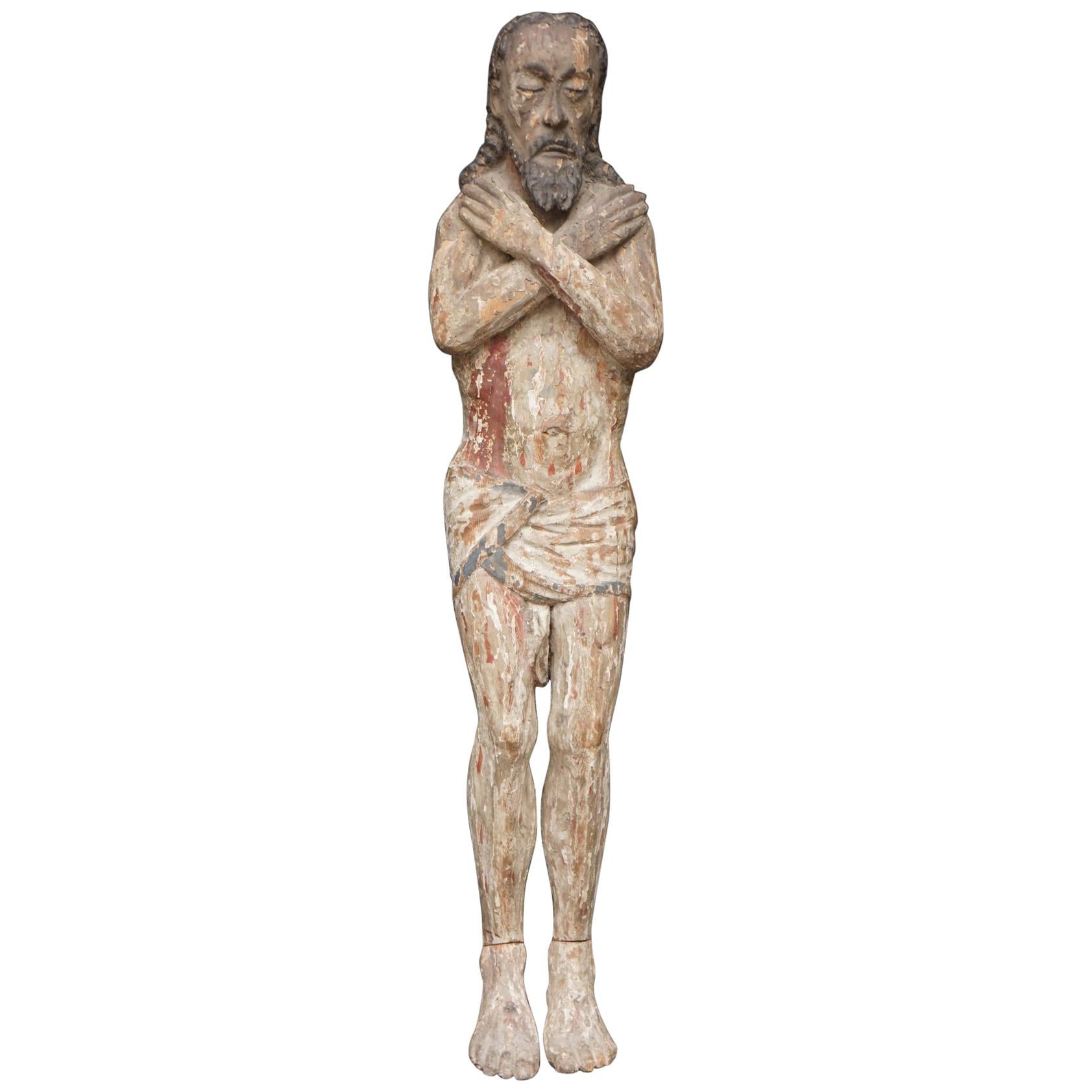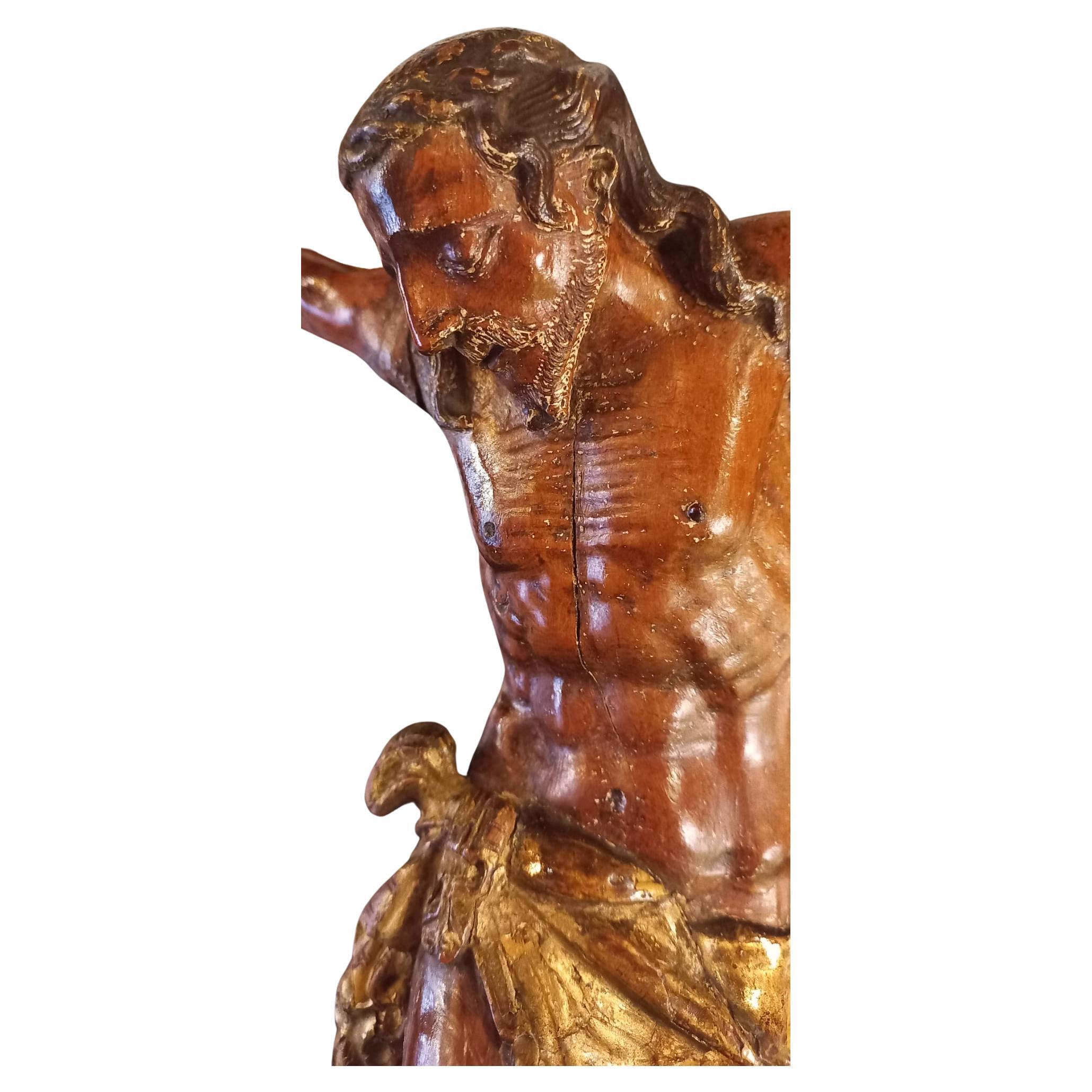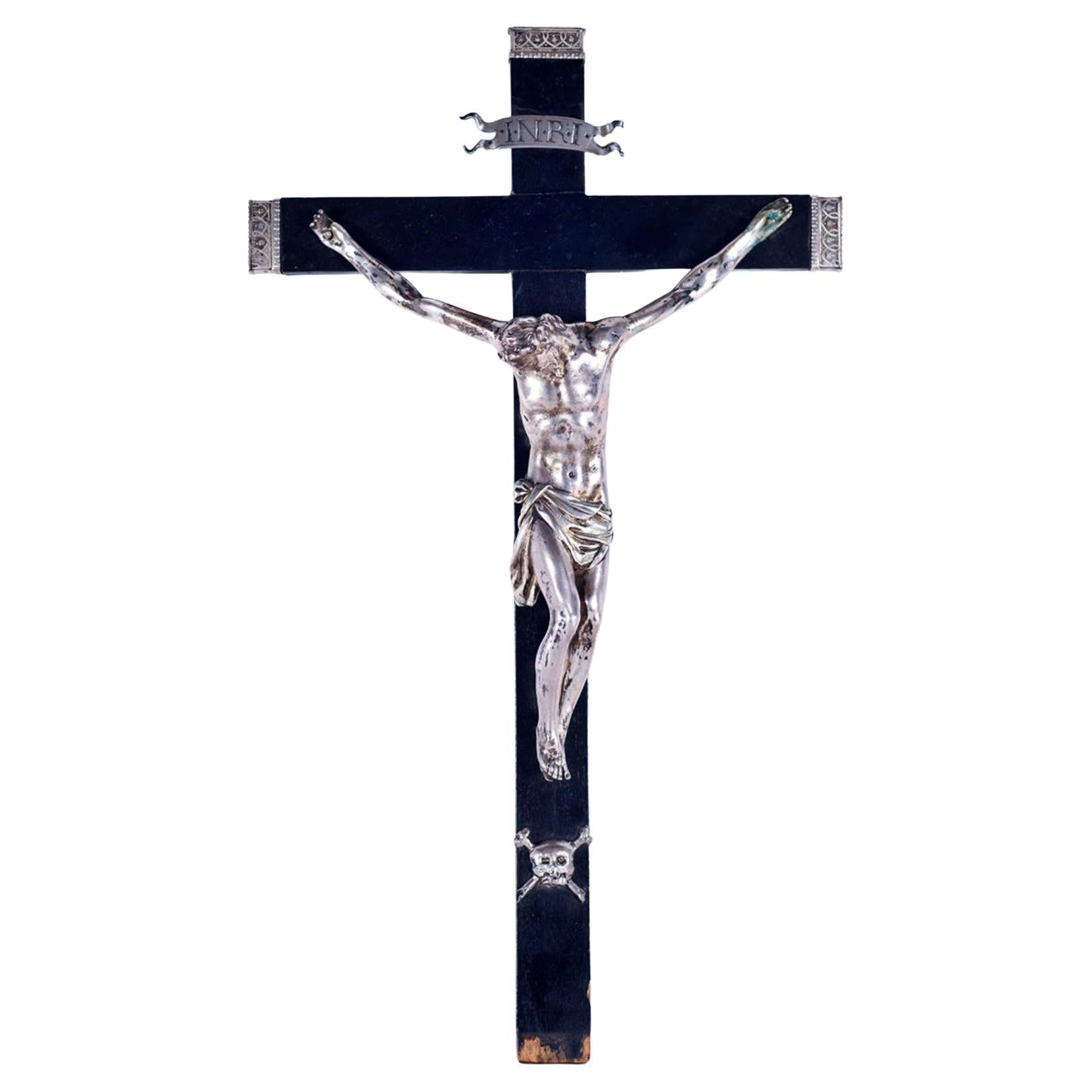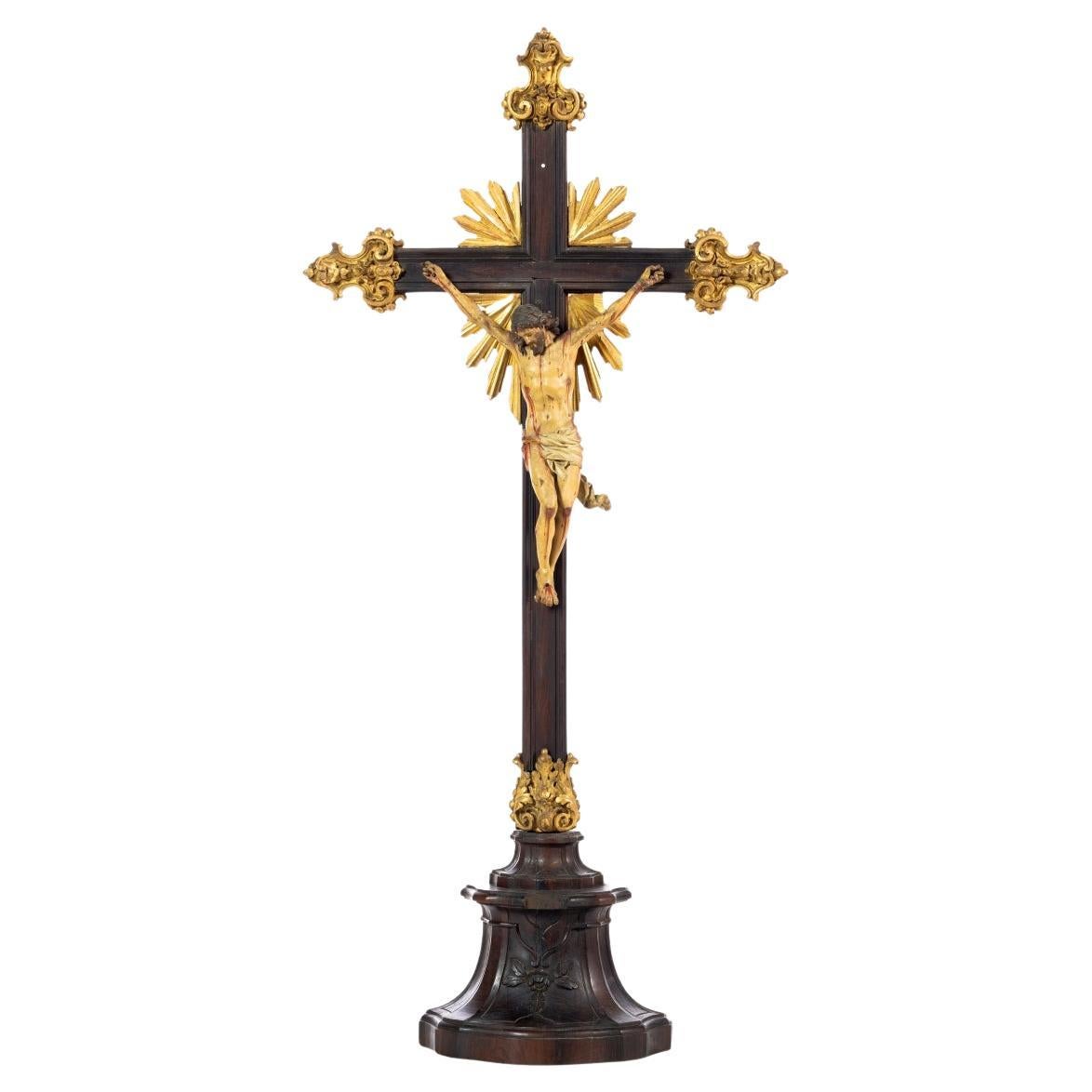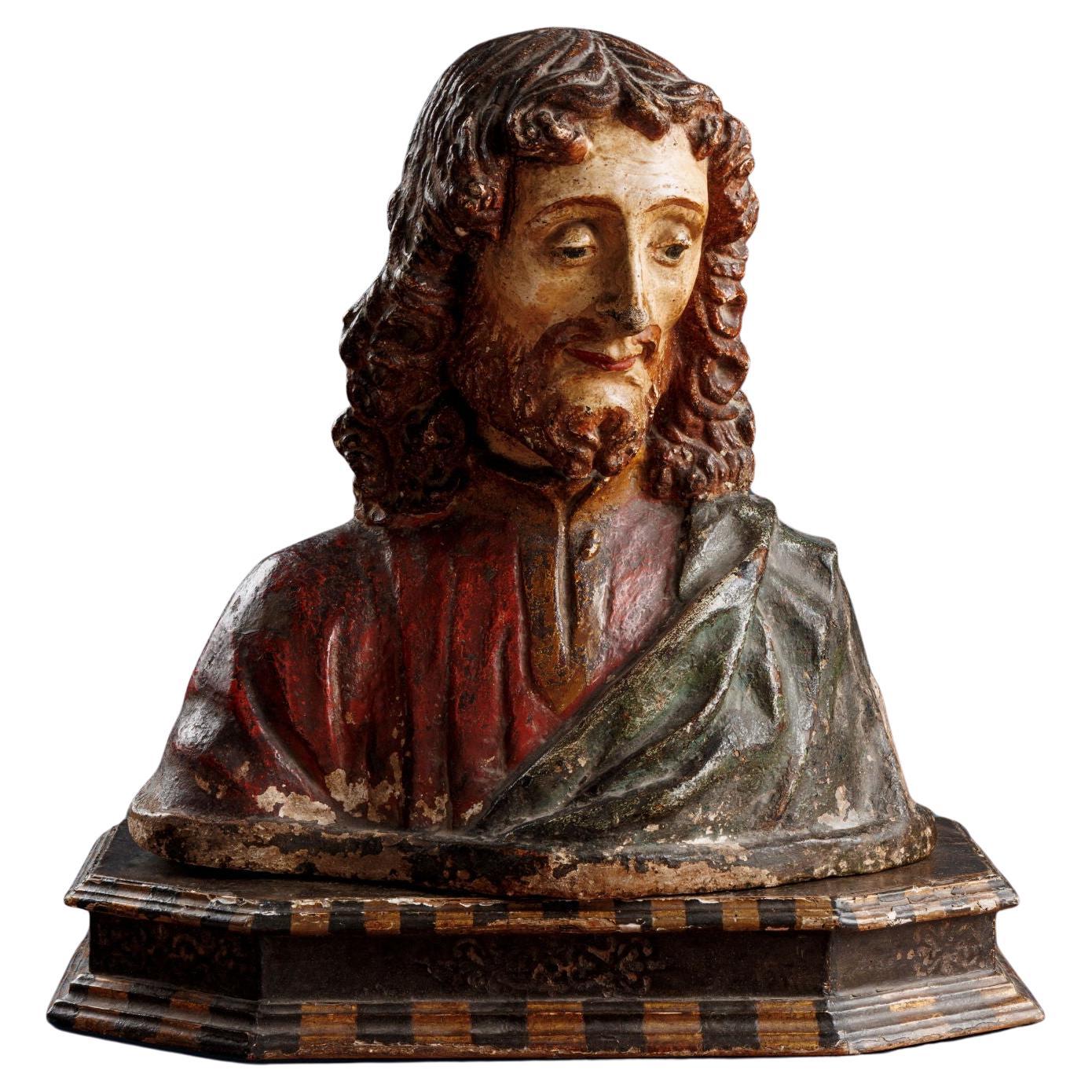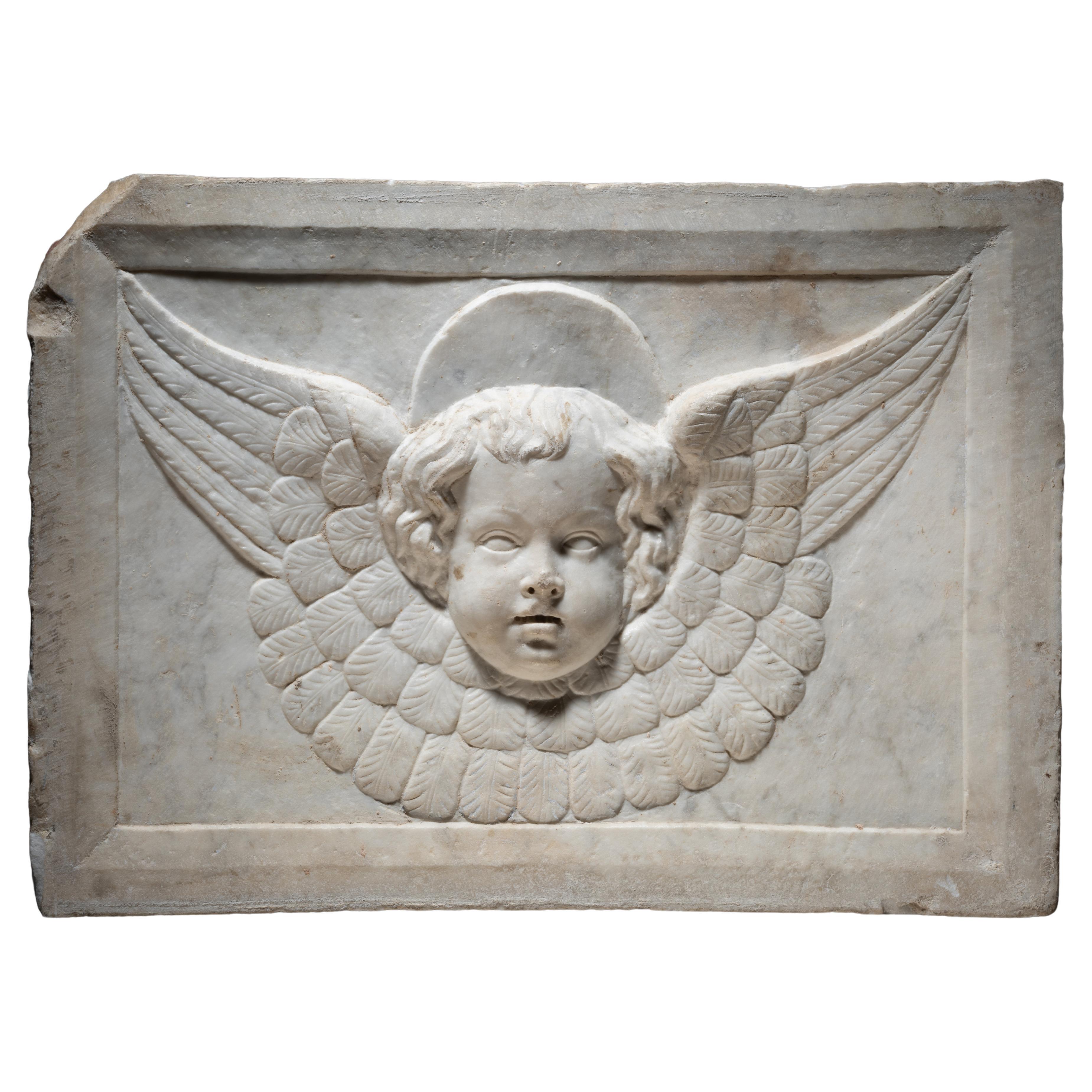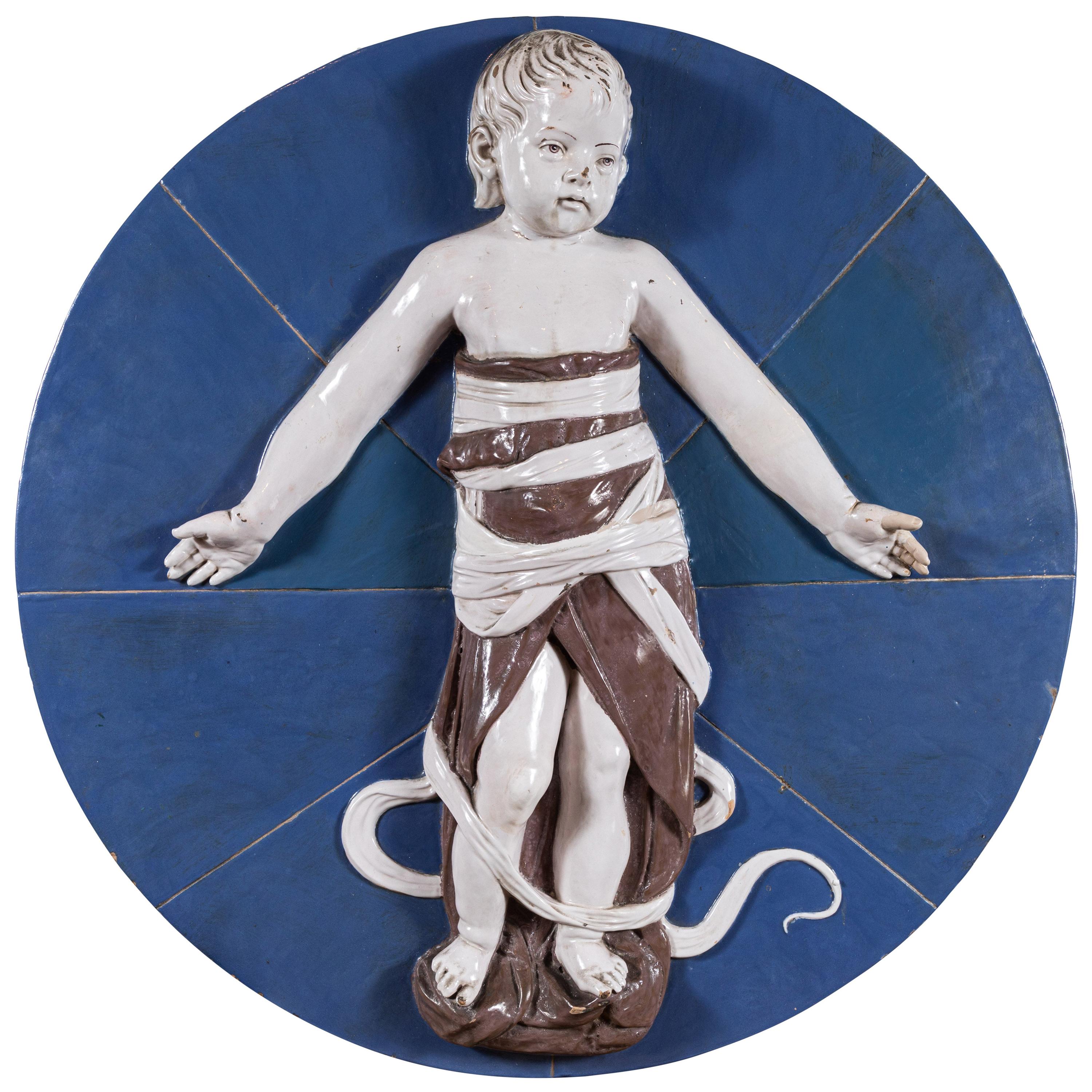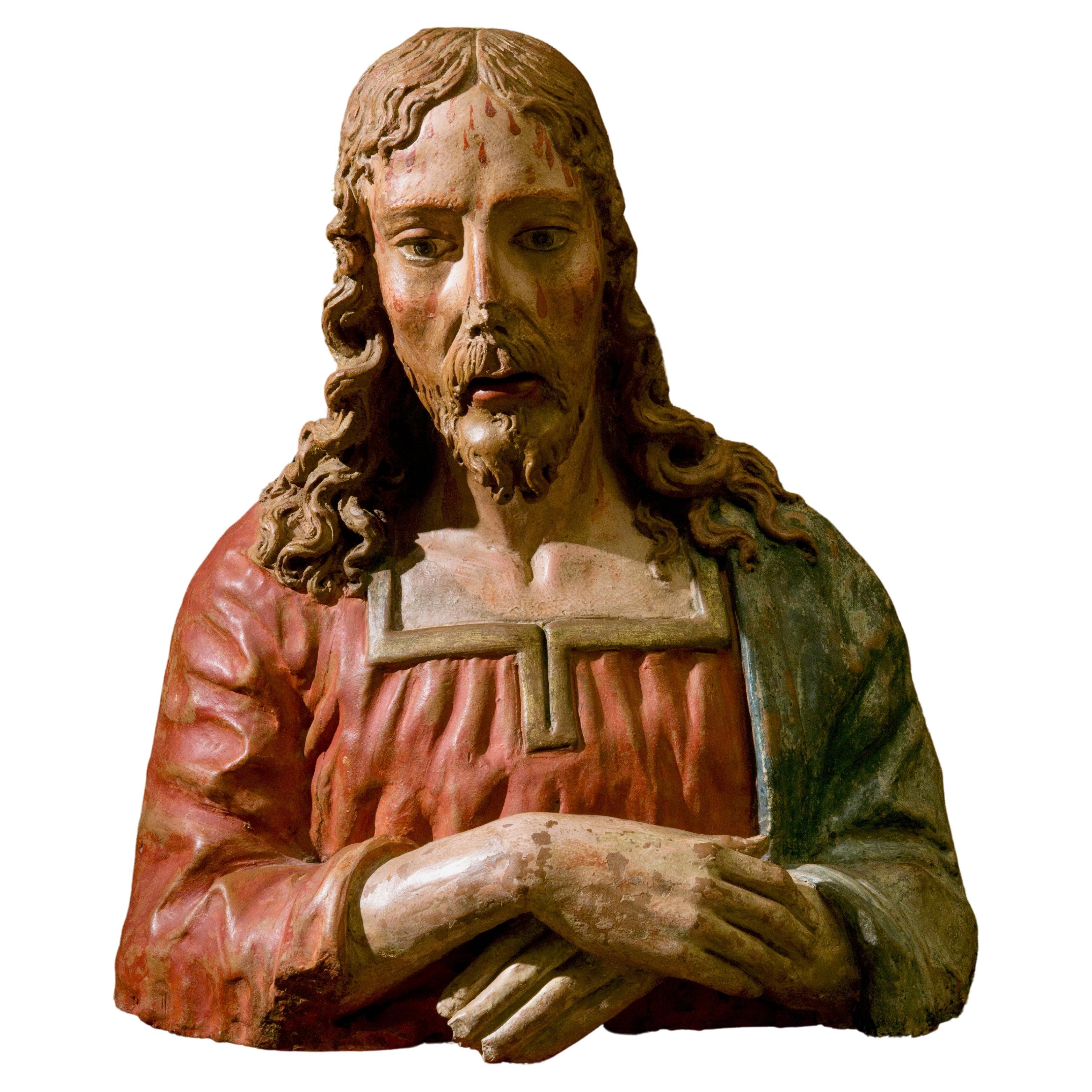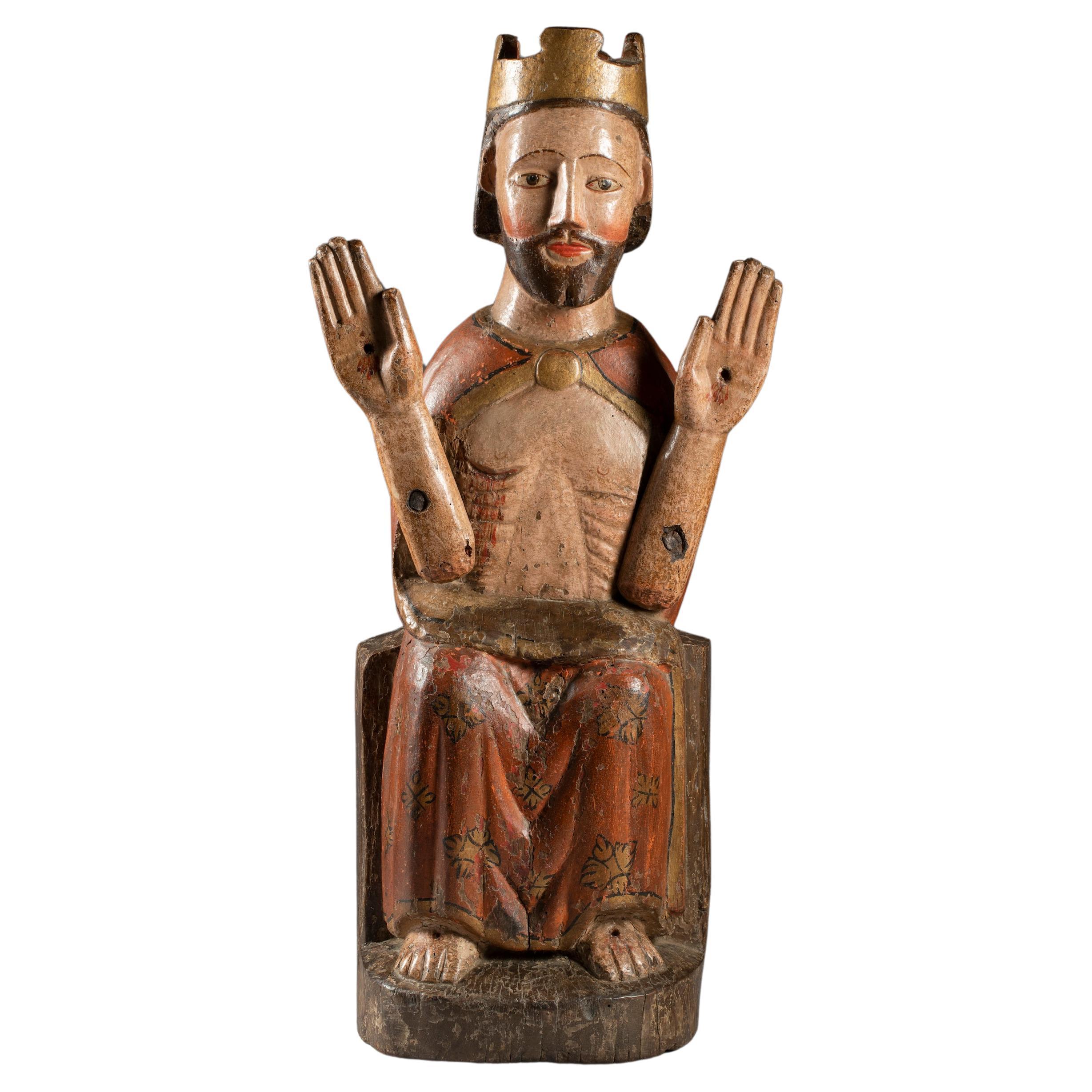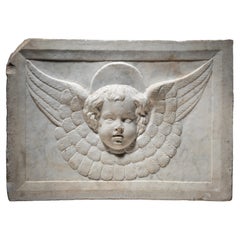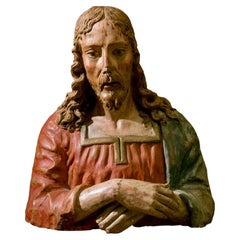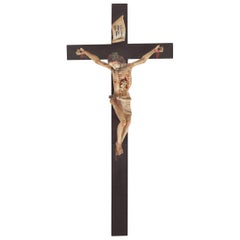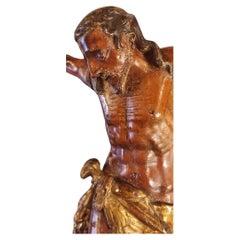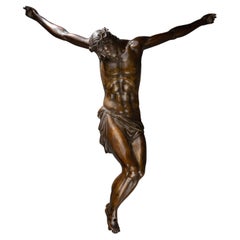
Guglielmo Della Porta Workshop, Christ Crucified
View Similar Items
Want more images or videos?
Request additional images or videos from the seller
1 of 7
Guglielmo Della Porta Workshop, Christ Crucified
About the Item
- Dimensions:Height: 15.56 in (39.5 cm)Width: 13.78 in (35 cm)Depth: 3.15 in (8 cm)
- Style:Renaissance (Of the Period)
- Materials and Techniques:Bronze,Forged
- Place of Origin:
- Period:
- Date of Manufacture:1570
- Condition:
- Seller Location:Bruxelles, BE
- Reference Number:1stDibs: LU6666234375772
About the Seller
5.0
Vetted Seller
These experienced sellers undergo a comprehensive evaluation by our team of in-house experts.
1stDibs seller since 2022
7 sales on 1stDibs
More From This SellerView All
- Cercle of Jacopo della Pila - Marble relief depicting a winged CherubLocated in Bruxelles, BECercle of Jacopo della Pila (Lombard, in Naples 1471-1502) Marble relief depicting a winged Cherub Naples, second half of15th century 40 x 57 x 12 cm Exquisitely carved, this relief portrays a winged cherub with cascading hair and delicate features. The cherub's plump, smooth countenance, rounded cheeks, outlined lips, and finely drawn nose emanate a sense of tenderness. The quadrangular module, is adorned with a carved frame. The relief ascends gradually, transitioning from the low relief of the wings to the high relief of the head. The rectangular frame and the subtly curved form of the artwork suggest that the relief likely adorned the upper part of an arch or a vaulted chapel. The type is that of the perspective room with a coffered ceiling decorated with figures of winged cherubs, which is found in various Neapolitan chapels of the 15th century. Coffered ceilings attest to the recovery of antiquity and the search for luxury in Renaissance architecture, first in Florence, then in Rome and Naples. The majority of the numerous family chapels and tombs built during the late fifteenth century in south of Italy employ the new formal vocabulary of the Florentine Renaissance in a self-confident manner that permitted a broad spectrum of variations. The escalating admiration for the classical world, coupled with the development of perspective, significantly contributed to the Renaissance endorsement of coffered ceilings. This artistic and constructive device drew inspiration from the intricate marble patterns observed in historical landmarks such as the Arch of Titus, the Temple of Vesta in Tivoli, the Pantheon, and the Basilica of Maxentius. A distilled product of both mathematical and artistic cultures, deeply scrutinizing the ancient world, the coffered ceiling plays a vital role in the perspective construction of space with its regular and directional geometry. The motif of the coffered ceiling decorated with cherubs in relief was introduced in Naples by Francesco Laurana in the plastic decoration of the Arch of Castelnuovo. Laurana's impact on the art scene in the south of Italy was profound. The introduction of the winged cherub into the region's artistic vocabulary bridged the gap between the classical and the contemporary, creating a synthesis that resonated with both aesthetic and spiritual sensibilities. His influence extended beyond the immediate visual appeal, shaping the cultural identity of the Renaissance in southern Italy. Although the plastic decoration of the Arch of Castelnuovo cannot certainly be ascribed to a mature Renaissance style, it was precisely on this occasion that the sculptors who worked there could get to know and export throughout the Italian peninsula that type of "Florentine classicism" which, even in the 15th century Naples, was conditioned by the Burgundian culture imported into the Kingdom by Alfonso of Aragon himself, with artists called from Spain and Northern Europe. The coffered ceiling, with its geometric patterns and Laurana's winged cherubs nestled within, became a symbol of refinement and cultural sophistication. The relief sculptures, carefully integrated into the overall design, transformed the ceiling into a celestial realm, inviting viewers to contemplate the divine while immersed in the grandeur of the Renaissance space. Similar winged cherubs appears also in the Naples cathedral. Within the renowned Succorpo Chapel, a mesmerizing marble coffered ceiling adorned with cherubs epitomizes the splendor of the Neapolitan Renaissance. The interplay of light and shadow on the textured surface of the marble coffered ceiling introduces an ethereal dimension, providing an immersive visual experience for observers. The geometric precision and the repeated patterns, reminiscent of classical motifs, establish a sense of harmony and balance that has become the hallmark of the Neapolitan interpretation of Florentine Renaissance aesthetics. Although probably intended to be admired from a distance, this cherub is intricately detailed and exquisitely rendered: the face and hair are elegantly outlined and the feathers are textured through juxtaposed lines. The marble, both figurative and decorative, adheres to the principles of balance and restrained ornamentation typical of the « Florentine Classicism ». Harmonious shapes and gracefully orchestrated curves , rooted in the classical repertoire, converge to evoke a sense of ethereal beauty. The surface displays the masterful use of a chisel to intricately carve the feathers and facial features, creating an almost abstract quality. This work is a testament to a sculptor of great skill and rich figurative knowledge, seamlessly blending classical firmness in contours with a refined treatment of the marble's surface. The combination of tradition and innovation point to a stylistic idiom from Lombardy, in particular we can find some comparaisons with the works of Jacopo della Pila, sculptor of Lombard origin working in Naples in the second half of the 15th century. He is documented there between 1471 and 1502, and is a protagonist of the Aragon Renaissance in the second half of the Quattrocento, together with the other great Northern sculptor active in the kingdom, Domenico Gagini. the first commission he received dates back to August 9, 1471, when Jacopo publicly committed to sculpting the funerary monument of Archbishop Nicola Piscicelli to be placed in the Cathedral of Salerno. The last known work is an altar ordered on July 29, 1502, by the noble Jacopo Rocco for the church of San Lorenzo Maggiore in Naples. Between these two chronological extremes (1471-1502), we must place the fervent activity of the artist, who had trained in Rome, perhaps under the guidance of Paolo Romano but also engaged in dialogue with other major artists of the city, especially Isaia da Pisa. He enriched his experience in Naples, initially drawing inspiration from the works of Domenico Gagini and later from the Tuscan masterpieces of Antonio Rossellino and Benedetto da Maiano destined for the church of Santa Maria di Monteoliveto. Jacopo della Pila's artistic personality is thus based on a complex interplay of influences, contributing to the definition of a highly personal style. Close comparaison can be made between our cherub and the winged angels reliefs...Category
Antique 15th Century and Earlier Italian Renaissance Figurative Sculptures
MaterialsMarble
- Terracotta Bust of Christ as the Redeemer, 15th CenturyLocated in Bruxelles, BEA terracotta bust of Christ as The Redeemer Tuscany or Emilia Romagna, late 15th century Measures: 46 x 43 x 21 cm This powerful, moving bust of...Category
Antique 15th Century and Earlier Italian Renaissance Figurative Sculptures
MaterialsTerracotta
- Fra Mattia Della Robbia, Saint Joseph, Tuscany, Around 1505-1510By Della RobbiaLocated in Bruxelles, BEFra Mattia Della Robbia (Firenze 1468-1534) Saint Joseph Terracotta Tuscany, around 1505-1510 55 x 40 x 30 cm Marco della Robbia the Younger (April 6, 1468 in Florence - 15...Category
Antique 16th Century Italian Renaissance Figurative Sculptures
MaterialsTerracotta
- Embriachi workshop marquetry casket - Northern Italy, 15th centuryLocated in Bruxelles, BEEmbriachi workshop marquetry casket Northern Italy, 15th century Alla certosina inlays (bone, stained bone, pewter and wood) H 28.2 x W 18 x D 14 cm This beautiful casket of rectangular form is richly decorated with the characteristic geometric patterns of the Embriachi style. The intricate geometric patterns are fashioned by juxtaposing lighter and darker pieces of wood, (colored) bone, horn and pewter. The lid and base are framed by a broad band of horn. When ivory became scarce in Europe due to disrupted trade routes, bone was substituted. The attention to Symmetry and balance created an harmonious visual effect Enhancing the overall aesthetic appeal of the casket. The application of geometrical motifs is in Italy known as marquetry ‘alla Certosina’, named after the Certosina Church in Pavia with its famous altarpiece decorated in this way. This is ‘intarsia technique’, a term derived from the Arabic 'tarsi', which means ‘incrustation' recalling ancient mosaics made from various materials. These geometric elements not only enhance the aesthetic appeal of the caskets but also demonstrate the versatility and skill of the artisans in creating multifaceted works of art. ‘Alla Certosina’ became famous through the Northern Italian Embriachi family who achieved a particularly high standard in working in this technique. Venice in particular was known for the production of these luxurious boxes. The caskets, hexagonal or rectangular, surmounted by a lid decorated in several registers constitute the secular, albeit equally renowned component of the workshop’s production, in addition to mirror frames and various everyday objects. The method of fabrication of those objects was based on two concepts that underlay pre-industrial production: standardization and modularity, thanks to a distribution of skills according to the different phases of fabrication. even the realization of the marquetry motifs (in the form of ingots from which portions of the desired size were cut) were therefore entrusted to various specialized craftsmen, as were the assembly phase. Today better known thanks to the extensive research work recently carried out by Michele Tomasi, this workshop owes its name to its founder and owner, the Florentine Baldassare Ubriachi (or degli Embriachi), a merchant and banker established in the Tuscan capital before he settled in Venice in 1395. Together with sculptor Giovanni di Jacopo, who directed the workshop, from the last years of the fourteenth century, Baldassare oversaw a production that was truly original, and still easily recognizable today, comprising monumental altarpieces and various objects, primarily triptychs and caskets. The precise location of the workshop is unknown, except that it originated in Florence and in ca. 1431 there was apparently a workshop in Venice, in the area of S Luca. They employed local workers specializing in 'certosina' (inlay of stained woods, bone and horn), and the workshop produced items carved in bone (usually horse or ox) with wood and bone marquetry. The geometric decoration of Embriachi caskets reflects the artistic complexity and attention to detail that characterized their work. this inlaid casket is a testament to the skill and artistry of the Embriachi family and serves as a stunning example of the decorative arts of the late Middle Ages. Related Literature : E. Berger, Prunk-Kassetten: Europäischen Meisterwerke aus acht Jahrhunderten / Ornamental Caskets...Category
Antique 15th Century and Earlier Italian Renaissance Decorative Boxes
MaterialsPewter
- Portrait of Gentleman from Della Ruota Family, Lombardy, Dated 1624Located in Bruxelles, BEPortrait of a Gentleman from Della Ruota family Lombardy, dated 1624 Oil on canvas Measures: 105 x 81 cm (without the frame) The coat of arms at the top left of the portrait identifies the effigy as an aristocrat belonging to the Lombard family Della Ruota, represented at the age of 61 in 1624. The presence of vanity at the bottom right is a clear reference to the passage of time, to the aging and dying body...Category
Antique 17th Century Italian Renaissance Paintings
MaterialsCanvas
- Cercle of Romano Alberti, Page, Around 1530-1540Located in Bruxelles, BECercle of Romano Alberti, dit Il Nero da Sansepolcro ( San Sepolcro, 1521-1568 ) Page Mixed media : wood core, papier mâché, stucco, polychrome and gilded Italy, around 1530-154...Category
Antique 16th Century Italian Renaissance Figurative Sculptures
MaterialsStucco, Wood, Paper
$11,484 Sale Price35% Off
You May Also Like
- Crucified Sculpture of ChristLocated in Antwerp, BEModern translation of crucified and tortured Christ sculpture, Italy, 1960s Above his head, there is a piece of parchment with I.N.R.I written on it, which in Latin means: Iesus Nazarenus, Rex Iudaeorum (Jesus of Nazareth...Category
Vintage 1960s Italian Mid-Century Modern Figurative Sculptures
- Baroque Figure of Crucified ChristLocated in Hudson, NYThis unusual Baroque figure of Christ carved circa 1670 and 1700 is in a form associated with his removal from the cross after crucifixion but before his...Category
Antique Late 17th Century Spanish Baroque Wall-mounted Sculptures
MaterialsWood
- Christ Crucified in boxwood and golden loinclothLocated in Salò, ITChrist Crucified in boxwood and gilded loincloth, 16th-century German sculptor, height from head to foot 31 cm, width between hands 30 cm. Christ also has golden highlights on the pr...Category
Antique 16th Century German Figurative Sculptures
MaterialsBoxwood
- JESUS CHRIST CRUCIFIED European, 19th centuryBy Europa AntiquesLocated in Madrid, ESJESUS CHRIST CRUCIFIED European, Germany ? 19th century Christ and font in bronze, wooden cross, covered with enamel. Slight wear. Dim.: (cross) 50 x 30 cm; Height: (christ) 16 cm...Category
Antique 19th Century German Baroque Figurative Sculptures
MaterialsBronze
$1,528 Sale Price20% Off - 18th Hispanic Filipino Crucified Christ Carved Wood SculptureLocated in Valladolid, ESOne of a kind sculpture of Crucified Christ in carved wood and crystal eyes (one of them its loose), 18th century Hispano Filipino School. The crown, ...Category
Antique 1730s Philippine Baroque Religious Items
MaterialsSilver
$20,318 Sale Price20% Off - Christ Crucified in Silver 16th Century Italian SchoolBy Europa AntiquesLocated in Madrid, ESChrist crucified in silver 16th Century Italian school Measure: height: 40cm. very good condition.Category
Antique 16th Century Italian Baroque Figurative Sculptures
MaterialsSilver
$4,442 Sale Price20% Off
Recently Viewed
View AllMore Ways To Browse
Hermes God Helmet
J Philippe Bronze Statue
Greek Hermes Sandals
Hermes Bath Set
Hermes Greek God Sandals
Marble Statue Of Roman Soldier
Vintage Breeze Blocks
Virgin And Child Statue Italy
Yard Gnomes
Ancient Greek Hermes Statue
Antique African Wooden Statues
Antique Bisque Piano Baby Figurines
Antique Pewter Goblet
Antique Pewter Goblets
Buste Femme Antique
Greek God Hermes Helmet
Hermes Adding Machine
Hermes Ancient Greek Statue

